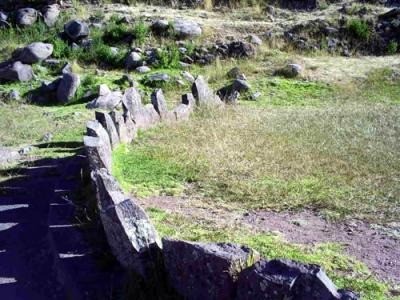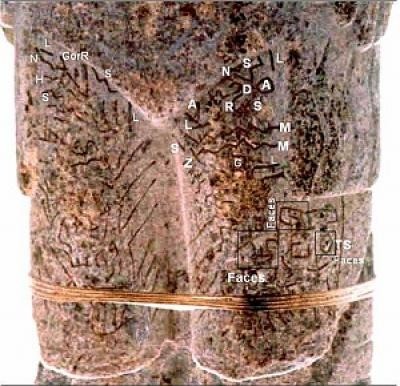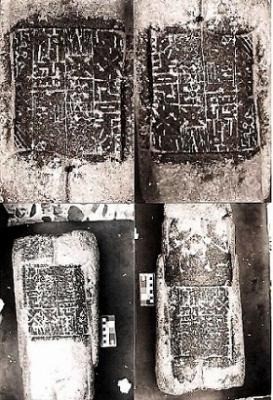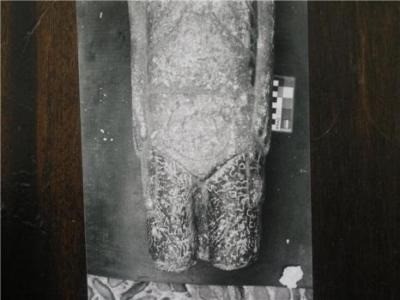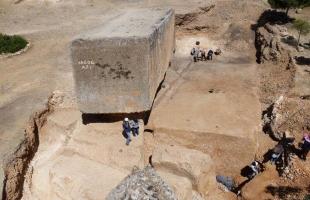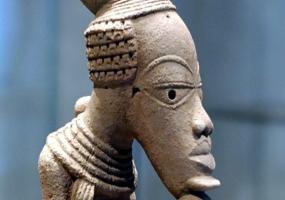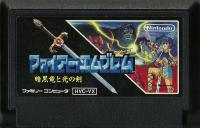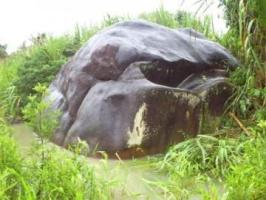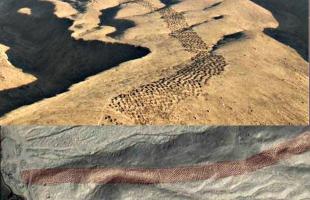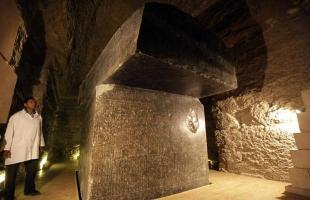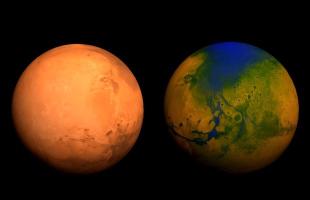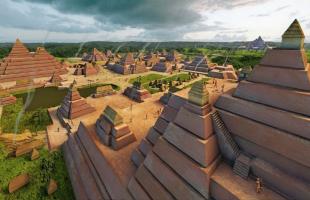The enigma of the Pokotia monolith, emblem of the Pukara civilization

The Pokotia monolith is an anthropomorphic stone statue, about 170 cm high, discovered around 1960 at the site of Pokotia, approximately 2 kilometers from the city of Tiahuanaco.
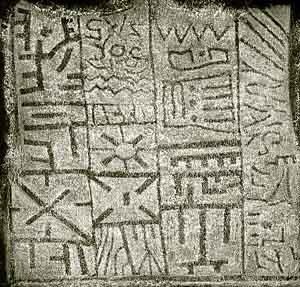
In 2002, researchers Bernardo Biados, Freddy Arce, Javier Escalante, César Calisaya, Leocadio Ticlla, Alberto Vásquez, Álvaro Fernholz, Omar Sadud, Paulo Batuani and Rodrigo Velasco, analyzed the monolith, which was located in the Museum of Precious Metals of La Paz, and they realized that it contains inscriptions not only on the front part, but also on the back.
Unfortunately, it was not possible to return to the exact place where the monolith was found, since that would have allowed a serious stratigraphic study to be carried out. In any case, from the analysis of the statue it can be stated that it belongs to a period prior to the classic Tiwanaku civilization. In my opinion, the Pokotia monolith may have been carved at a time before the flourishing of the Pukara civilization.
According to official linguistics, the term Pukara comes from Quechua and means fortress or strategic place from which you can supervise a valley or the confluence of two rivers.
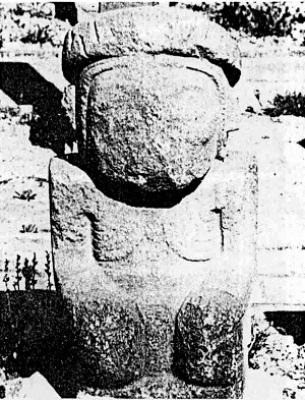
The Pukara civilization had its center in the fortified citadel located 61 kilometers north of Juliaca, in the department of Puno. However, the term Pukara is so common in the valleys north of Lake Titicaca (the site of Poquera and also the petroglyphs of Pusharo , situated much further away, on the Palotoa River, in the Madre de Dios) that it carries, in my opinion, to discover the origin of the Pukara civilization in the Amazon.
Probably, some indigenous people of Arawak origin headed towards the mountains around the 6th millennium BC, in order to exchange their products. Some of them stopped on the high plateau and, mixing with the natives of Colla origin, gave rise to the Chiripa and Qaluyo cultures (also proven by the Quiaca petroglyphs, very similar to those of Pusharo), and successively to the Pukara civilization.
The place where the Pokotia monolith was found was recognized by some researchers as a sacred place or an oracle.
According to the scholar Clyde A. Winters, on the Pokotia monolith there are several inscriptions (of proto-Sumerian origin), but the most important are under the hands (which are resting on the thighs) and on the dorsal part (on the back of the statue).
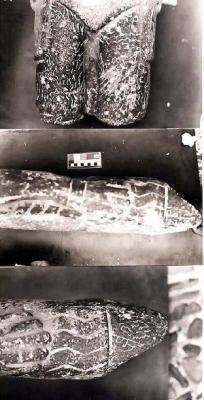
This is the translation of the inscriptions found on the front, according to Clyde A. Winters:
Disclose to all humanity the opening of the Putaki oracle. It is proclaimed that the lineage of Putaki will be estimated in time. Act justly, so that the oracle can spread wisdom. Appreciate the cult. Everyone must bear witness to the divine will. The fortune teller will interpret the oracle's guidance, in order to announce the rules that will govern humanity. Citizens will bear witness in favor of human beings, who will spread wisdom and be an example of strong character.
On the front left side of the statue there is another inscription that is interpreted as follows:
The shaman proclaims the immense importance of this place, the power of divinity, in order to deliver wisdom to man.
Then there are two additional incisions on the same front part:
Oh, great Putaki, wise man and progenitor of many people.
And another one:
Swear to bear testimony of character and wisdom. Bear witness to the power of divinity, in order to strengthen your character.
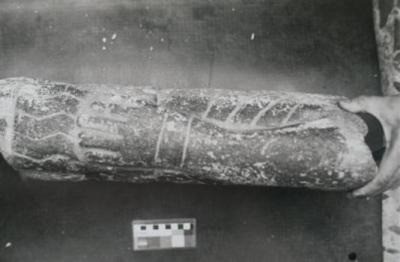
On the hand of the monolith it would be written, still according to Winters:
The oracle of Putaki leads man to the truth. This precious oracle will make esteem germinate, now it witnesses his flight.
Regarding the dorsal part of the monolith, there are several interpretations. According to Clyde A. Winters, this would be the translation:
The ideal standard is the oracle. This oracle leads to the knowledge of the divine will. Distribute the divine will to all humanity. Understand the meaning of the perfect voice. The oracle will spread serenity. Listen to the oracle, call the fortune teller. The fortune teller speaks wisely. The divine will will be visible and flashing, coming out of the mouth of the oracle. Listen to the fortune teller, listen to the oracle so you can acquire wisdom and character. Listen to the oracle to spread the divine will, following the legitimate and just Good. Summon pure food for the oracle. Oh, oracle, you are the testimony of purity. You will spread serenity and wisdom. The Putaki oracle is the father of wisdom and benefit to all. It will become a visible testimony of wisdom and divine will. You will spread the divine will and be a testimony of its power.

According to Winters, therefore, the Pokotia monolith was an oracle named Putaki.
The inscriptions recorded there would be in pictographic proto-Sumerian, although not cuneiform as in the Fuente Magna. The authors of the inscriptions on the Pokotia monolith would then be the same as those who made the incisions on the Fuente Magna, in a period between 3000 and 2000 BC.
Winter also suggests that proto-Sumerian would derive, along with proto-Dravidian and proto-Mandé, of peoples who lived in the Sahara before the flood.
There is also another translation of the dorsal inscriptions of the Pokotia monolith. It is an interpretation of the pictographic Quellca, the ancient language of the Andean highlands, spoken perhaps by a restricted circle of priests in the Pukara culture or in the classical Tiahuanaco.
According to this interpretation, which is even based on archaeo-astronomical calculations, the inscriptions located on the back of the monolith would mean:
At the time Manco Capac and Mama Ocllo emerged from the waters of Lake Titicaca, a new star appeared in the sky right next to the Southern Cross. Successively, the star became smaller and then disappeared from the sky. It was seen over the mountains on the horizon between two mountains and began to shine on the third day of the fourth month.
According to this interpretation, therefore, the dorsal part of the monolith would recount the explosion of a supernova, just when the famous legend of Manco Capac and Mama Ocllo said that they came out, or were “born” from Lake Titicaca.
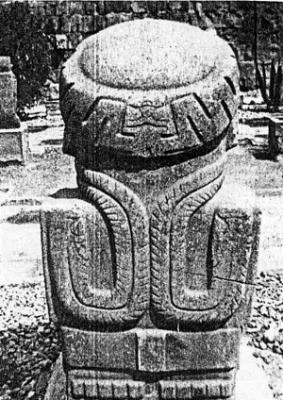
After having analyzed both the Fuente Magna and the Pokotia monolith, I am certain to affirm that both finds are authentic and that both contain proto-Sumerian and Quellcan inscriptions.
As I already pointed out in my article on the Fuente Magna, I totally agree with Bernardo Biados' thesis, according to which the Sumerians circumnavigated Africa as early as 3000 BC.
The fact that, once they reached Cape Verde, they faced winds contrary, he made them head and enter the ocean in search of favorable winds (the same route was traveled centuries later by the Phoenicians, the Carthaginians and the Portuguese).
This is how, accidentally, the Sumerian navigators found themselves on the coasts of Brazil, probably in the current states of Piauí or Marañao. As they were in search of metals, they headed to the interior of the continent and, sailing along the Madeira and Beni rivers, they reached the Andean plateau, a place that, in addition to being rich in metals, has been considered sacred since archaic times, due to the very existence of Lake Titicaca, the highest in the world.
Some Sumerians remained in the Andean highlands and mixed with the Colla and Arawak ethnic groups, while others returned to their homeland.
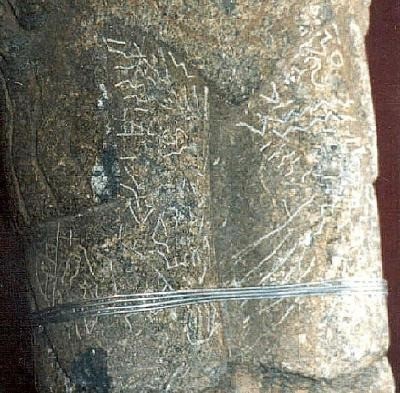
It is interesting to see the similarities, especially in the consonants, of the following terms:
Pusharo (PSR), Pukara (PKR), Pokotia (PKT), Putaki (PTK). Therefore, it is possible that the origin of the Pukara civilization and, subsequently, of the site of Pokotia (with the oracle of Putaki), is the Amazon jungle, with the enigmatic petroglyphs of Pusharo, which, in my opinion, indicate a strategic place used by jungle people during their long journey to the mountains.
If further excavations are approved at Tiwanaku and Pokotia, with the aim of scrutinizing what lies at a depth of about 30 metres, important proto-Pukara sites could be discovered and perhaps also other ancient traces of the presence of the Sumerians in the New World.
YURI LEVERATTO
